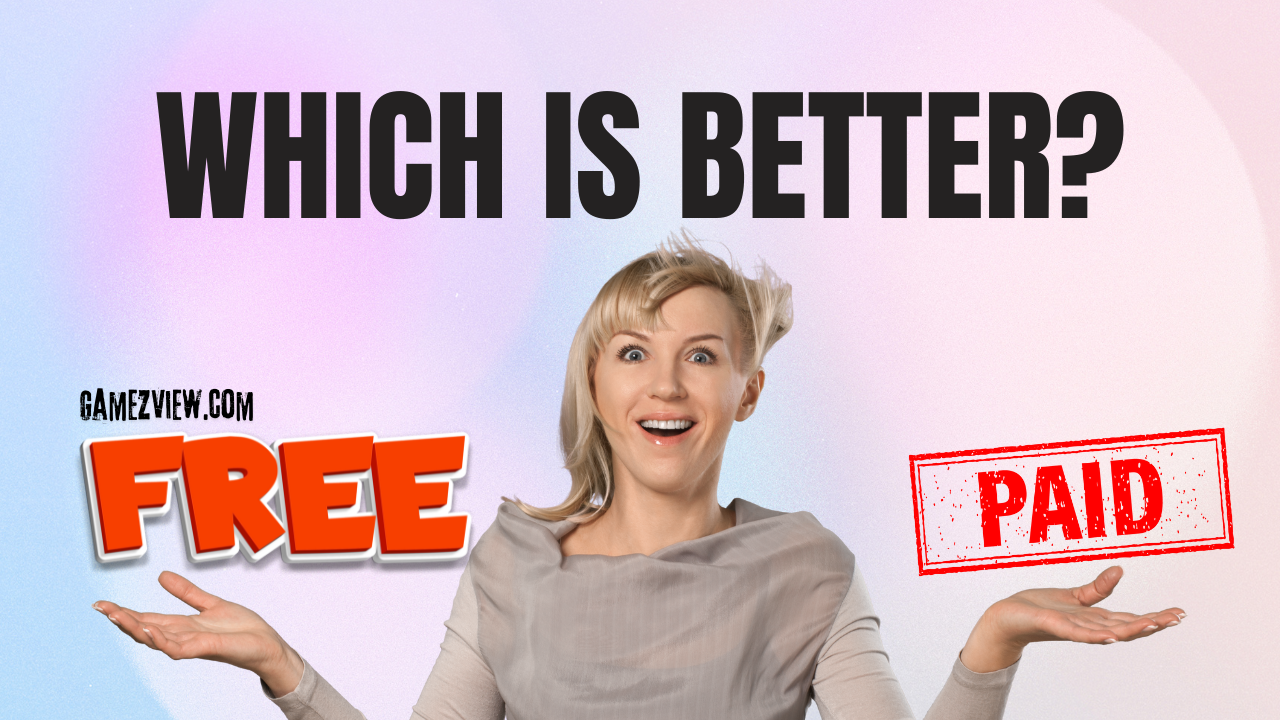In the realm of gaming, the debate between free and paid games has been ongoing. Both options offer unique experiences and come with their own set of advantages and disadvantages. Understanding the differences between free and paid games can help gamers make informed decisions about which option suits their preferences and gaming habits best.
Types and Categories
Free Games
- Freemium Games: These are free-to-play games that offer optional in-game purchases or advertisements.
- Free-to-Play (F2P) Games: Completely free games without any upfront cost.
Paid Games
- Premium Games: Games that require an upfront purchase to access.
- Subscription Services: Platforms offering access to a library of games for a monthly fee.
Symptoms and Signs
Free Games
- Limited Content: Free games often have restricted content compared to their paid counterparts.
- In-Game Advertisements: Players may encounter frequent advertisements interrupting gameplay.
- Pay-to-Win Mechanics: Some free games may feature pay-to-win elements, where players can gain advantages by spending money.
Paid Games
- Full Access: Paid games typically offer complete access to all features and content without additional purchases.
- No Advertisements: Paid games usually don’t feature in-game advertisements, providing a seamless gaming experience.
- Fair Gameplay: Paid games tend to prioritize fair gameplay without pay-to-win mechanics, fostering a more balanced environment.
Causes and Risk Factors
Free Games
- Monetization: Free games rely on in-game purchases, advertisements, or microtransactions for revenue.
- Player Retention: Developers of free games focus on retaining players through engagement and incentivizing purchases.
Paid Games
- Development Costs: Paid games require upfront investment in development, leading to higher initial prices.
- Value Proposition: Paid games aim to deliver value directly to players without relying on additional monetization methods.
Diagnosis and Tests
Free Games
- Player Engagement Metrics: Developers of free games analyze player engagement metrics to optimize monetization strategies.
- A/B Testing: Experimentation with different in-game features and monetization models to maximize revenue.
Paid Games
- Quality Assurance: Paid games undergo rigorous testing to ensure a high-quality gaming experience.
- Refund Policies: Players of paid games may have access to refund policies if they’re dissatisfied with the product.
Treatment Options
Free Games
- In-Game Purchases: Players can purchase virtual items, cosmetics, or in-game currency to enhance their gaming experience.
- Advertisement Removal: Some free games offer the option to remove advertisements through one-time purchases.
Paid Games
- Single Purchase: Players make a one-time payment to purchase the game and gain access to all content.
- Expansion Packs or DLCs: Additional content may be offered for purchase to extend the gameplay experience.
Preventive Measures
Free Games
- Budget Management: Set spending limits to avoid overspending on in-game purchases.
- Research: Read reviews and research in-game monetization models before investing time or money.
Paid Games
- Demo Versions: Try demo versions or free trials before purchasing to assess the gameplay and overall experience.
- Wait for Sales: Paid games often go on sale, offering discounts to budget-conscious gamers.
Personal Stories or Case Studies
Free Games
- Case Study: Jane, an avid gamer, spent hundreds of dollars on in-game purchases in a free-to-play mobile game before realizing the impact on her finances.
- Personal Experience: John enjoys playing free-to-play online multiplayer games but finds the constant barrage of advertisements frustrating.
Paid Games
- Case Study: Mark purchased a premium game for his console and appreciated the absence of in-game advertisements, leading to a more immersive gaming experience.
- Personal Experience: Sarah prefers paid games for their complete access to content without worrying about additional purchases.
Expert Insights
Free Games
- According to game developer Alex Smith, “Free-to-play games can offer excellent experiences, but players need to be mindful of potential spending pitfalls.”
- Psychologist Dr. Emily Johnson suggests, “Parents should monitor their children’s spending habits in free games to prevent overspending.”
Paid Games
- Game designer Michael Adams emphasizes, “Paid games prioritize delivering a complete and satisfying gaming experience without relying on monetization tactics.”
- Professor David Miller states, “Paid games often provide better value for money compared to free-to-play models, especially for dedicated gamers.”
In the debate between free and paid games, both options cater to different preferences and gaming styles. While free games offer accessibility and a low barrier to entry, paid games provide a complete gaming experience without the distractions of advertisements or pay-to-win mechanics. Ultimately, the choice between free and paid games depends on individual preferences, budget considerations, and gaming priorities.



